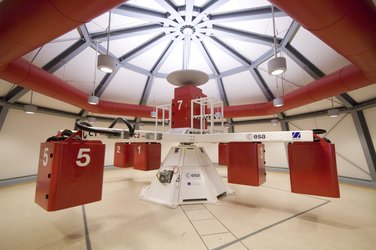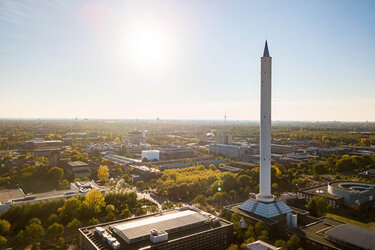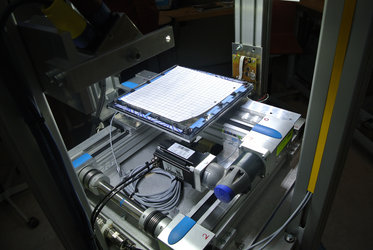Meet the teams: BubJet (2010)
![]()
![]()
![]()
Bubble Jet Impingement in Microgravity Conditions![]()
| University | Universitat Politècnica de Catalunya (UPC) |
| Endorsing professor |
Ricard González Cinca Applied Physics Department, UPC |
| Team | Francesc Suñol, Oscar Maldonado, Anna García |

A group of three students from Universitat Politècnica de Catalunya (UPC) has developed an experimental setup to investigate the collision of bubble jets in microgravity conditions. The experiment will be carried out this October at the ZARM drop tower in Bremen, Germany. The results could help to understand the behaviour of two-phase flows in a low gravity environment. In particular, the effects of gas/liquid flow rates and separation between jets on the bubble coalescence probability will be investigated.
The basic understanding of the behaviour of two-phase flows in space is imperative in many engineering and industrial applications such as propulsion, refrigeration and oxygenation systems as well as in many heat- and mass- transfer devices.
The opposed-jet configuration has been used extensively for studying laminar/turbulent properties of fluids and different kinds of flow instabilities. The basis of this configuration is to bring two jets flowing along the same axis in opposite direction into collision. As a result, a narrow zone in which heat- and mass- transfer rates can be highly intensified is created.
On the other hand, bubbly jets have been the subject of many theoretical and experimental studies, since many applications require the use of small bubbles with high area-volume ratio. The control of the spatial dispersion of those small bubbles is crucial for finding the optimal operation of such applications.

The data obtained from this experiment will complement the work of Carrera et al that was performed at the ZARM drop tower in 2003[1], in which the structure of a single bubbly jet was investigated.
The results of this experiment will help to improve the general understanding of two-phase flows, in particular the bubble generation process, the bubble-bubble interactions (coalescences, bouncing) and the jet collision phenomenon in a low gravity environment.
Read more about this experiment on the ERASMUS Experiment Archive.
[1] J. Carrera, X. Ruiz, L. Ramírez-Piscina, J. Casademunt, M. Dreyer. Generation of a monodisperse microbubble jet in microgravity. AIAA Journal Vol. 46, No. 8 2010-2019 (2008).















 Germany
Germany
 Austria
Austria
 Belgium
Belgium
 Denmark
Denmark
 Spain
Spain
 Estonia
Estonia
 Finland
Finland
 France
France
 Greece
Greece
 Hungary
Hungary
 Ireland
Ireland
 Italy
Italy
 Luxembourg
Luxembourg
 Norway
Norway
 The Netherlands
The Netherlands
 Poland
Poland
 Portugal
Portugal
 Czechia
Czechia
 Romania
Romania
 United Kingdom
United Kingdom
 Slovenia
Slovenia
 Sweden
Sweden
 Switzerland
Switzerland





























